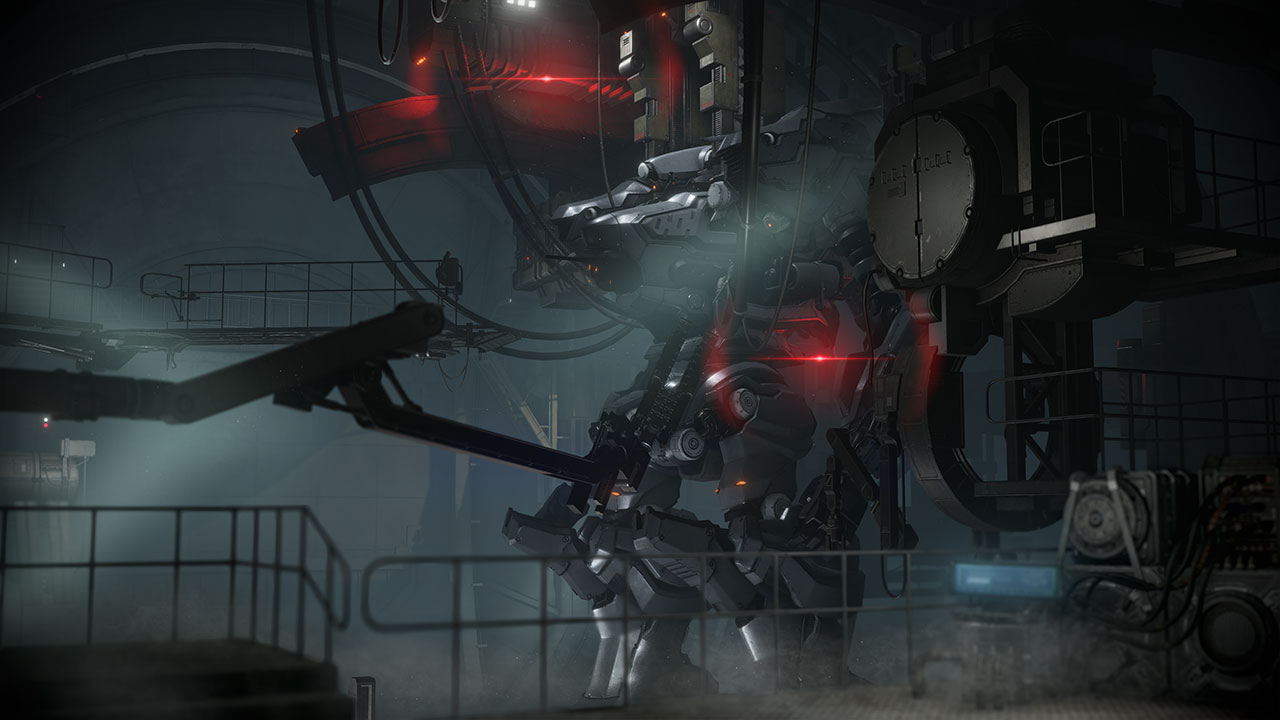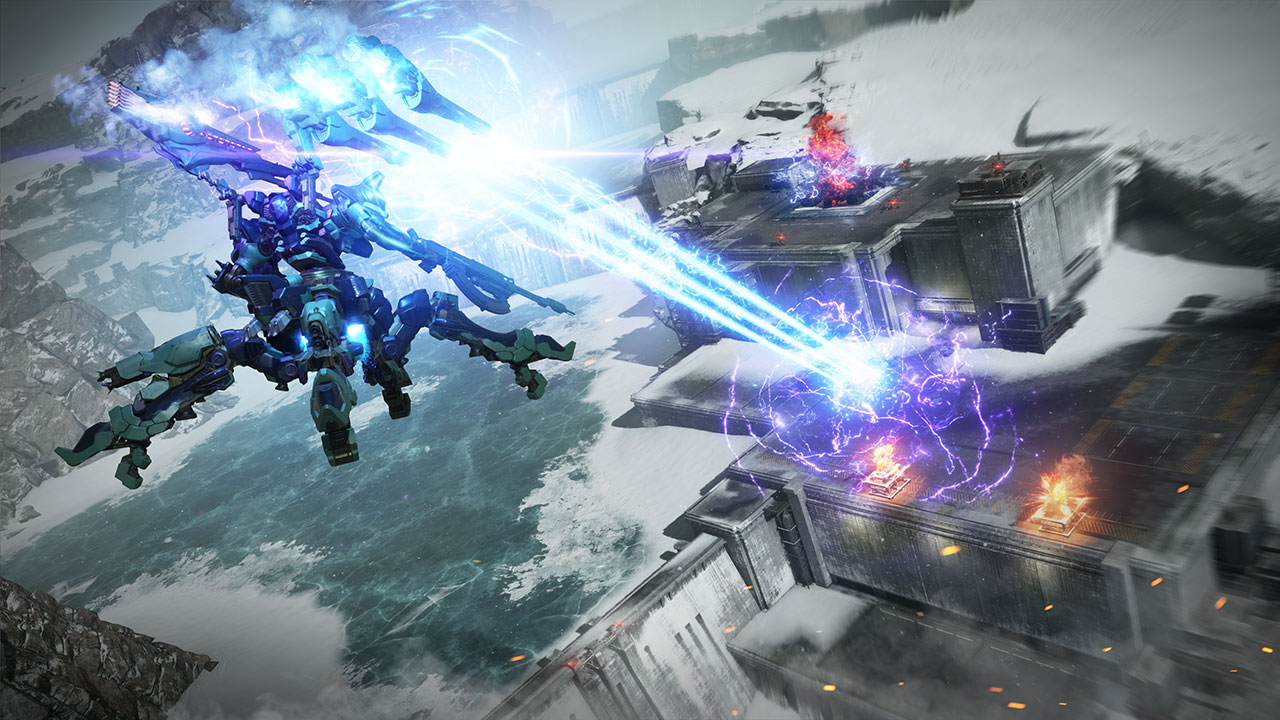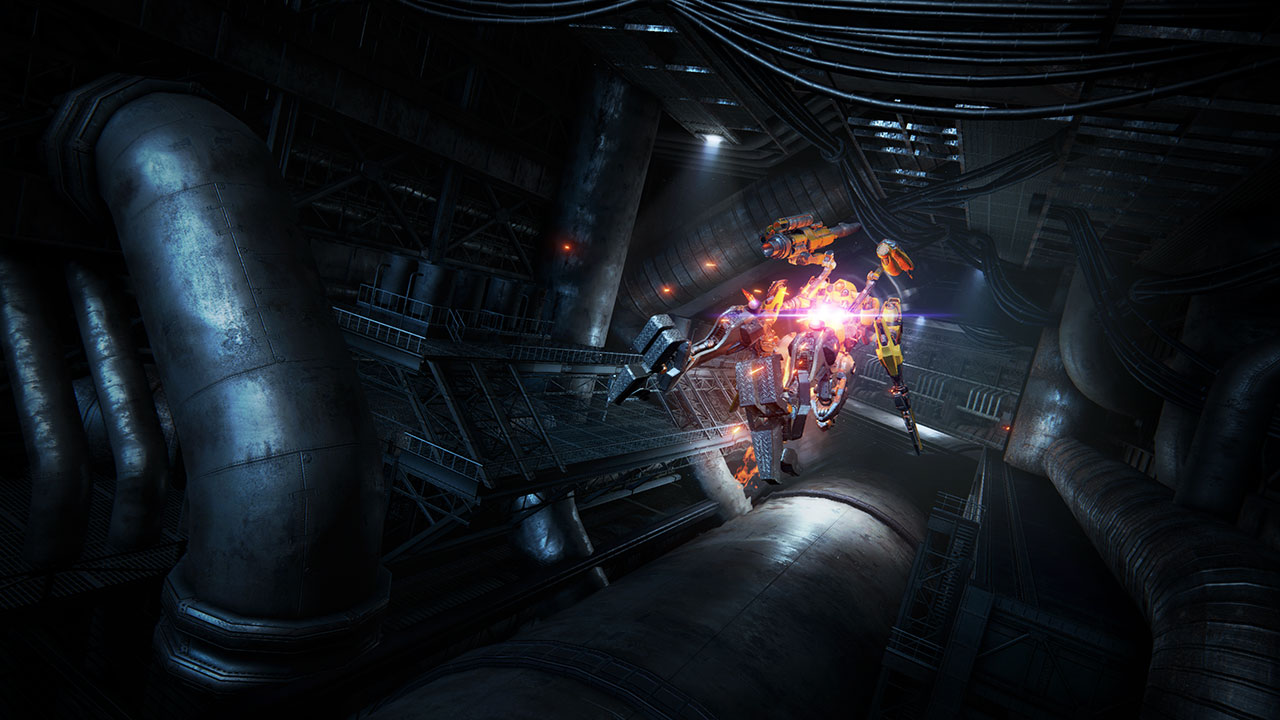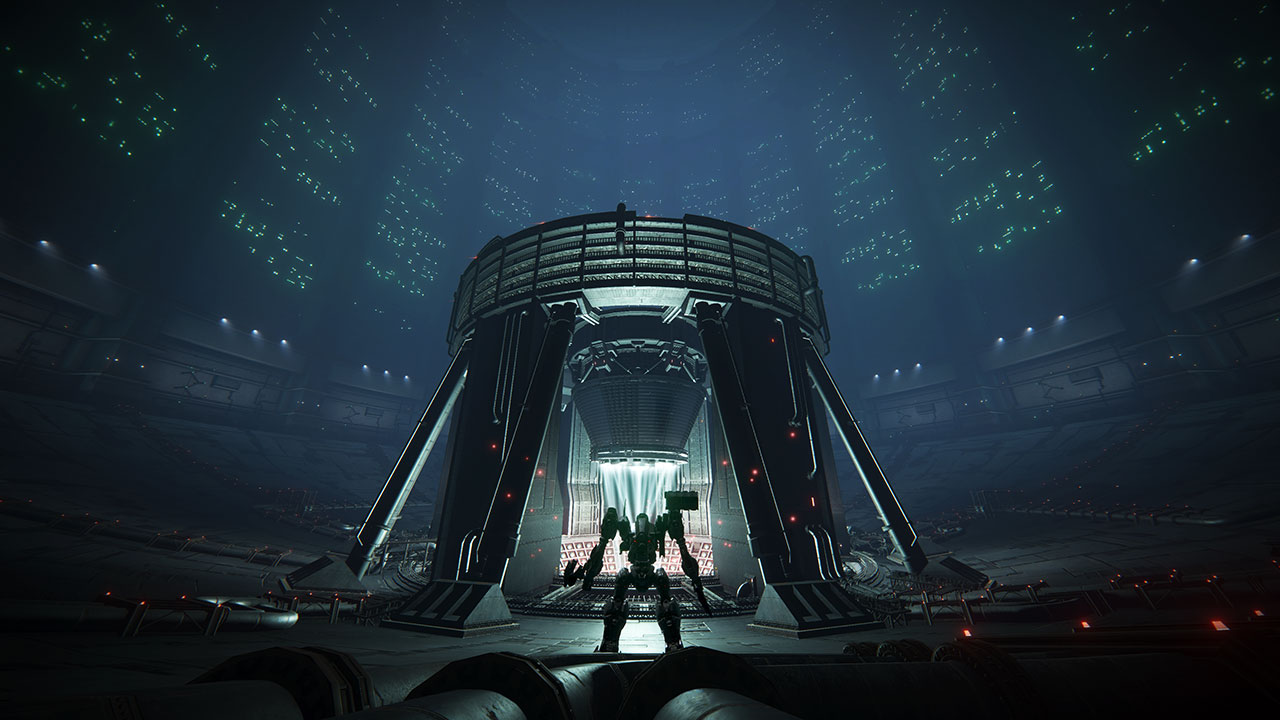It’s been around 10 years since the last mainline Armored Core game was released. In that time, developer FromSoftware established and became known for the Soulsborne genre, thanks to its Dark Souls franchise, Bloodborne, Sekiro: Shadows Die Twice, and last year’s Elden Ring. This year, the studio finally released Armored Core VI: Fires of Rubicon, which not only maintains the core experience the franchise became known for but also introduces elements from the more recent titles the studio has now become famous for.
Customization
One of the central elements of the Armored Core series, which is back in its sixth main installment, is the customization mechanics of its titular mechs. Players are able to obtain or purchase parts for their Armored Core, including frames, internal components, and weapons. In Armored Core VI, players can switch out the arms, legs, torso, and head of their mech as well as its engine, fire control system, and boosters. Lastly, players are able to equip their Armored Core with up to four weapons, one in each hand and shoulder.
Each part influences a myriad of stats that affect your mech’s offensive capability, defenses, speed, energy, and a whole lot more. Weapons also have their own set of stats that players will have to familiarize themselves with. Apart from mech parts and weapons, players will also be able to purchase expansions and upgrades using OS Tuning Chips. These can grant additional abilities or enhance certain aspects of the Armored Core, such as weapon damage, repair kit capacity, special shields, and a whole lot more.

Armored Core VI allows players to assemble a mech that fits their preference or playstyle, from fast-moving, run-and-gun builds to hovering heavy weapon platforms, and everything in between. The amount of parts and weapons available, especially later on, offers a lot of freedom and room for experimentation. However, the game does use an energy and weight system that you’ll need to balance and keep in mind when building your Armored Core.
The customization of Armored Core VI also goes beyond the capabilities and performance of the mech. Players are able to customize the color scheme of each Armored Core part or weapon. They’re also able to add emblems or even full decals to each part, including user generated ones, allowing for a massive amount of visual customization. User-generated emblems and decals can be shared online so you can easily find or check if someone else has already made an emblem or decal you’re interested in.
The level of customization Armored Core VI offers makes it one of the most accessible games in FromSoftware’s recent catalog. Firstly, players are able to customize their mech between missions and whenever they’re defeated, allowing them to easily change up their build to suit whatever situation or boss they’re having trouble with. While those looking for a challenge can choose to stick to whatever build they’re already using, those who prefer to optimize their mech for each battle have the option to.

Combat
As always, the gameplay and combat of Armored Core VI takes center stage. FromSoftware has decided to take a familiar approach to the game’s controls, making them intuitive and easy to get accustomed to. The weapons are bound to the four shoulder buttons; the face buttons host the jump, dodge, and dash moves; the left stick activates an Assault Boost mode, and the right stick toggles the hard lock on.
For this latest installment, FromSoftware has combined elements from previous Armored Core games as well as its other franchises, with the most obvious one being the energy/stamina bar, which is spent when you dodge, hover, or activate Assault Boost.
Assault Boost overcharges your mech’s boosters and propels you forward at high speed at the cost of high energy drain. It’s meant to be used for faster traversal, whether as a way to move from one area of the map to another or to quickly close the gap between you and a target. You can fire your weapons and dodge left and right while in Assault Boost. You can also use it in conjunction with the Boost Kick ability, which can be unlocked later on, to initiate combat with an enemy target.

Another recognizable element is the Stagger mechanic (from Elden Ring and Sekiro: Shadows Die Twice). While previous Armored Core titles also had a Stagger mechanic, they worked differently. In Armored Core VI, dealing enough Stagger damage to an opponent that it fills up their Stagger bar stuns them for a few seconds and makes them take more damage during the Stagger duration. Like in FromSoftware’s other titles, staggering an opponent is the best way to deal massive damage to them while eliminating the risk of a counterattack.
The amount of Stagger damage (or Impact damage) you deal is dependent on the weapon you use. Fires of Rubicon features Kinetic, Explosive, and Energy type weapons. Kinetic weapons balance regular and Impact damage while also doing increased damage to Staggered enemies, Explosive weapons deal the most Impact damage but feature a long reload time, and Energy weapons deal the most damage to shields while doing little Impact damage. These are things you’ll have to take into consideration when picking your weapon loadout.
Whatever combat style or loadout you choose and whether it’s against a number of weak opponents or facing off against a tough boss, combat in Armored Core 6 always feels satisfying and rewarding. And even if some of the bosses can get pretty challenging, the game allows players to switch their loadouts in between attempts so players can make adjustments to match up better against their current opponent, further rewarding experimentation.

Story & Missions
As its title suggests, Armored Core 6 takes place on the planet of Rubicon 3 where a valuable resource called Coral, thought to have been previously wiped out, has been rediscovered and a war between several factions for its control ensues. The player takes on the role of augmented mercenary C4-621, who is smuggled into the planet and steals the license and identity of a dead mercenary called “Raven.” Under the guidance of a handler named Walter, the player then takes on missions for the planet’s different factions.
The game’s story is told through radio communications, presentation-style mission briefings, simple cinematics, or in-mission cutscenes, and is one of Armored Core 6’s few weaknesses. While the game’s mission levels do a great job in immersing you into the world of Rubicon 3, the same can’t be said about the way it tells its narrative. While it isn’t difficult to follow or understand the game’s plot and characters, it just lacks the same impact a more visual-style of storytelling would give.

In spite of its choice of presentation, Armored Core 6 still features an engaging story and setting as well as an interesting cast of characters. The other mercenaries and the different Handlers are all performed well enough by their voice actors to keep the story interesting in spite of the lack of visual storytelling outside of missions. Fires of Rubicon also features a slightly branching storyline and multiple endings so there’s also some replayability to its story along with New Game+.
And for those who want to focus purely on combat, there’s the Arena mode where players can do battle against AI-controlled opponents to earn OST Chips for OS Tuning, Emblems, as well as the opponent AC’s preset build and COAM. Players can also participate in Armored Core 6’s PVP mode to test their skills and loadouts against other players.

Visuals
Lastly, the visuals of Armored Core 6 are decent enough. While the visual fidelity may look lacking in comparison to other games that have come out recently, it makes up for it tenfold in its visual style and direction. The visual effects and animations, from the way the mechs move to its projectiles and explosions, successfully engross you into its world and gameplay. Its visuals may not be AC6’s strong suit, but it’s done well enough that it isn’t a detriment to its excellent gameplay.
Conclusion
FromSoftware has done an amazing job with the long-awaited return of its Armored Core franchise. Armored Core 6 offers incredibly fun and challenging gameplay combined with an engrossing world and story. Fires of Rubicon feels like a culmination of things the studio has learned over the past decade from developing its other games, such as Sekiro and its Dark Souls series, which they then successfully applied to Armored Core 6: Fires of Rubicon without compromising what made the series so beloved.


